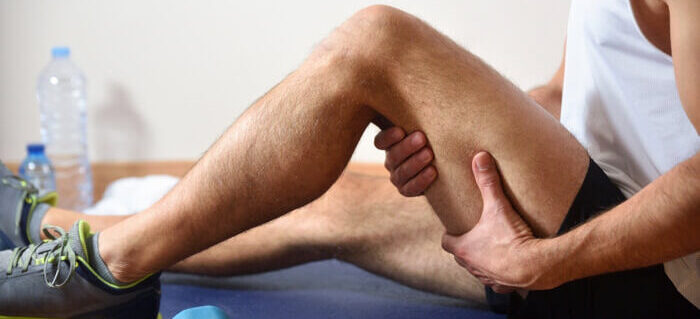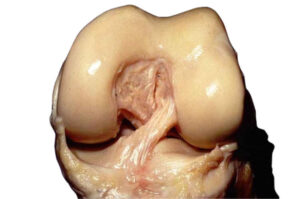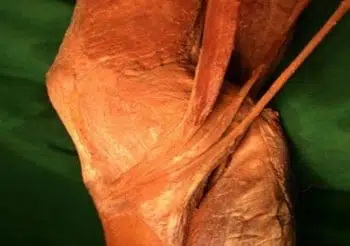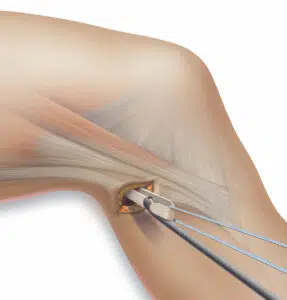
ACL reconstruction: hamstring

Written by Michael de Levie

Co-written by dr. Wybren van der Wal
There are four different tendons an orthopedic surgeon can choose from to restore knee stability during anterior cruciate ligament surgery. The four tendons are: quadricepstendon, patella tendon, hamstringpees en donor tendon. This blog is about the hamstring tendon. We will discuss what a hamstring tendon is and the advantages and disadvantages of this tendon.
All about the hamstring tendon as an anterior cruciate ligament
Every year in the Netherlands, about nine thousand people undergo anterior cruciate ligament reconstruction. A tendon that will function as a cruciate ligament is used to make a new one. There are several options for this. The tendon used to make a cruciate ligament from is called a "graft" in medical jargon. Which tendon your anterior cruciate ligament will be made from is useful to know. In this blog, you'll read about the factors the orthopedic surgeon uses to choose your graft and the differences between grafts.
Michael de Levie and Wybren van der Wal Orthopedic surgeon at hospital the Gelderse Vallei in Ede.
What is an anterior cruciate ligament?
The ACL is a Dynamic structure, rich in neurovascular supply and comprised of distinct bundles, which function synergistically to facilitate normal knee kinematics in concert with bony morphology. Characterized by individual uniqueness, the ACL is inherently subject to both anatomic and morphological variations as well as physiologic aging.
– Freddie Fu –

What is a hamstring tendon
There are three hamstring tendons on the back of the thigh: the Biceps Femoris, Semimembranosus and Semitendinosus tendons. The Semitendinosus tendon is used to create the hamstring graft. Depending on the thickness of this tendon, the Gracilis tendon may also be used to make the new cruciate ligament. This is because the new cruciate ligament must have a minimum diameter of 8 millimeters to reduce the chance of tearing again.
The hamstring has another important job besides bending the knee. In sports, slowing down a sprint or landing is a risk for cruciate ligament injury. Here, the hamstring has the ability to take power away from the knee and direct it toward the strong glutes. By using part of the hamstring for the graft, the remaining part may be less able to perform this task. However, it has been shown that in about two-thirds of people in whom the semitendinosus tendon is removed, it grows back and is properly functional.

Benefit of the hamstring tendon
One advantage of using the hamstring as a graft is that there is little risk of symptoms resulting from the removal of the tendon (so-called donor-site morbidity: pain at the site of the incision where the hamstring was removed). A second advantage is that there is less risk of knee stiffness than when using the patellar or quadriceps tendon. In addition, the hamstring tendon can handle large tensile forces (2.5 times more than the original cruciate ligament). The risk of re-rupture is the same as with the use of other tendons. Of course, this advantage does not outweigh the preservation of the original cruciate ligament. The native anterior cruciate ligament is superior in strength, function and anatomical position to a reconstructed cruciate ligament.
Disadvantage of the hamstring tendon
A possible disadvantage of the hamstring tendon is that over the years it tends to become somewhat more lax (stretching) than the patellar tendon. Some studies show this while others find no differences. Another disadvantage of using a hamstring tendon is that it does not grow in as quickly as the kneecap tendon. Because of this, the hamstring tendon has about 8 weeks left to grow in firmly while the kneecap tendon needs 5-6 weeks. However, it does not mean that the new cruciate ligament can be loaded 100 percent after 8 weeks. The tendon has grown attached but still goes through several stages to be converted from tendon to cruciate ligament. In this process, the tendon is weakest between 8 and 12 weeks and gets stronger in the months that follow.
All in all, the hamstring technique is a widely used and popular technique for anterior cruciate ligament repair.
Benefits:
- No or lower risk of knee stiffness or pain than with the quadriceps and patellar tendon.
- Hamstring is a strong tendon, however, the re-rupture probability is not lower.
- Hamstring tendon gives less pain compared to the patellar tendon technique (sawing out bone blocks).
- Smaller incision where the tendon must be extracted with less chance of residual pain.
Disadvantages are:
- The length and thickness of the hamstring tendon is difficult to predict
- A weakening of hamstring strength. In two-thirds of people, the semitendinosus recovers.
- The hamstring tendon may possibly develop some laxity over time.
- The ingrowth of the hamstring graft takes longer than the kneecap tendon (8 weeks on average).
- During surgery, the cutaneous nerve can be damaged, causing a numb sensation on the skin.

Winning the hamstring tendon
The anterior cruciate ligament surgery in 5 steps
- Removing the tendon from the thigh.
- Watch surgery; the knee is assessed on the inside and any other injuries are treated (such as a meniscus tear or cartilage defect)
- Drilling tunnels in the lower leg and upper leg (into which the new cruciate ligament will be placed)
- Inserting and fixing the cruciate ligament in the tunnels
- Closing the wounds.
The anterior cruciate ligament surgery by hamstring technique.




